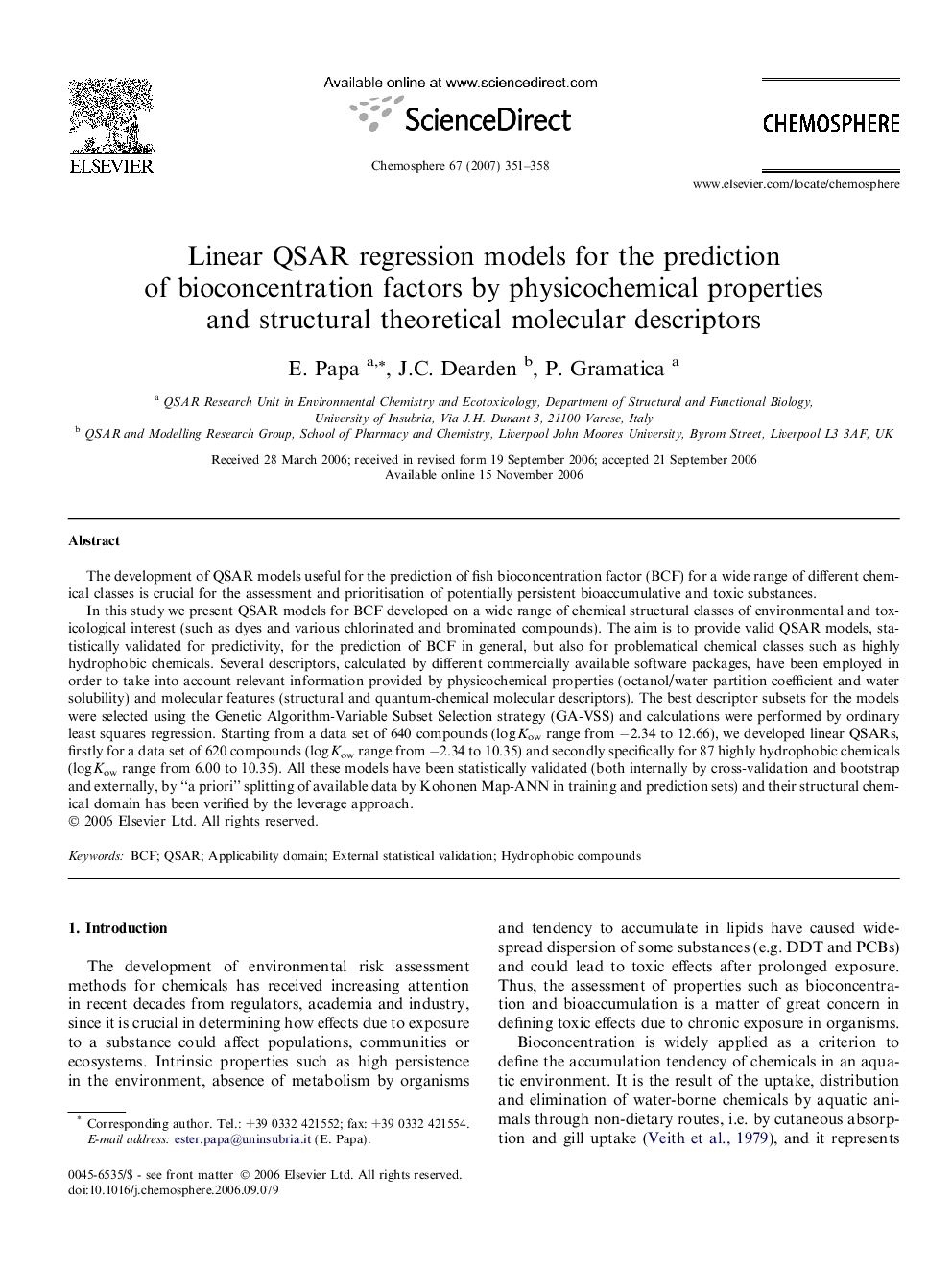| کد مقاله | کد نشریه | سال انتشار | مقاله انگلیسی | نسخه تمام متن |
|---|---|---|---|---|
| 4415629 | 1307753 | 2007 | 8 صفحه PDF | دانلود رایگان |

The development of QSAR models useful for the prediction of fish bioconcentration factor (BCF) for a wide range of different chemical classes is crucial for the assessment and prioritisation of potentially persistent bioaccumulative and toxic substances.In this study we present QSAR models for BCF developed on a wide range of chemical structural classes of environmental and toxicological interest (such as dyes and various chlorinated and brominated compounds). The aim is to provide valid QSAR models, statistically validated for predictivity, for the prediction of BCF in general, but also for problematical chemical classes such as highly hydrophobic chemicals. Several descriptors, calculated by different commercially available software packages, have been employed in order to take into account relevant information provided by physicochemical properties (octanol/water partition coefficient and water solubility) and molecular features (structural and quantum-chemical molecular descriptors). The best descriptor subsets for the models were selected using the Genetic Algorithm-Variable Subset Selection strategy (GA-VSS) and calculations were performed by ordinary least squares regression. Starting from a data set of 640 compounds (log Kow range from −2.34 to 12.66), we developed linear QSARs, firstly for a data set of 620 compounds (log Kow range from −2.34 to 10.35) and secondly specifically for 87 highly hydrophobic chemicals (log Kow range from 6.00 to 10.35). All these models have been statistically validated (both internally by cross-validation and bootstrap and externally, by “a priori” splitting of available data by Kohonen Map-ANN in training and prediction sets) and their structural chemical domain has been verified by the leverage approach.
Journal: Chemosphere - Volume 67, Issue 2, February 2007, Pages 351–358